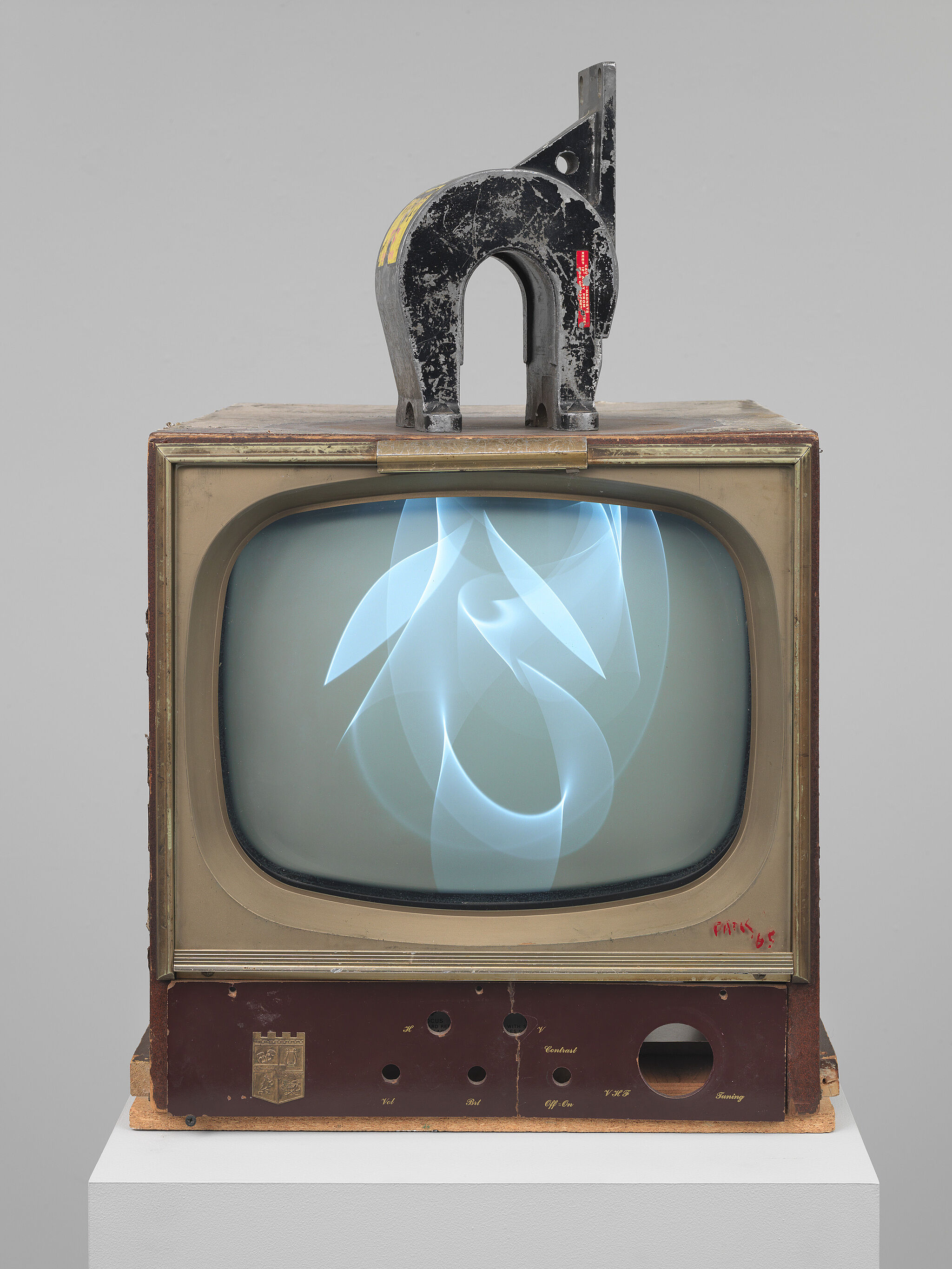Programmed: Rules, Codes, and Choreographies in Art, 1965–2018 | Art & Artists
Sept 28, 2018–Apr 14, 2019
Programmed: Rules, Codes, and Choreographies in Art, 1965–2018 | Art & Artists
Signal, Sequence, Resolution:
Liberating the Signal
5
The artists in this grouping use electronic or digital signals as their material but subvert the signals’ intended function, thereby “liberating” them from their original purpose. In doing so, they draw attention to the potential for signals to be carriers of instructions and visual information. Nam June Paik’s Magnet TV creates visual effects by distorting a television’s electronic signal, while digitally manipulated signals are an element of Cory Arcangel’s Super Mario Clouds for which the artist reprogrammed a Nintendo cartridge to erase the sound and all visual elements except for the clouds from the iconic video game. Signal and image resolution are explored by Jim Campbell, who programs LEDs to create cinematic and spatial images in both a room-sized installation and screen-based works.
Nam June Paik, Magnet TV, 1965
Magnet TV is an early example of Nam June Paik’s “prepared televisions,” works in which he altered the television’s image or its physical casing. This work consists of a seventeen-inch, black-and-white set with an industrial-size magnet resting on top of it. The magnetic field interferes with the television’s reception of electronic signals, distorting the picture into an abstract form that changes when the magnet is moved. Paik’s radical action undermines the seemingly inviolable power of broadcast television by transforming the TV set into a sculpture, one whose moving image is created by chance and can be manipulated at will. Through his alteration of the television image, Paik challenged the notion of the art object as a self-contained entity and established a process of instant feedback, whereby the viewer’s actions have a direct effect on the form and meaning of the work.
Artists
- Josef Albers
- Cory Arcangel
- Tauba Auerbach
- Jonah Brucker-Cohen
- Jim Campbell
- Ian Cheng
- Lucinda Childs
- Charles Csuri
- Agnes Denes
- Alex Dodge
- Charles Gaines
- Philip Glass
- Frederick Hammersley
- Channa Horwitz
- Donald Judd
- Joseph Kosuth
- Shigeko Kubota
- Marc Lafia
- Barbara Lattanzi
- Lynn Hershman Leeson
- Sol LeWitt
- Fang-yu Lin
- Manfred Mohr
- Katherine Moriwaki
- Mendi + Keith Obadike
- Nam June Paik
- William Bradford Paley
- Paul Pfeiffer
- Casey Reas
- Earl Reiback
- Rafaël Rozendaal
- Lillian Schwartz
- James L. Seawright
- John F. Simon Jr.
- Steina
- Mika Tajima
- Tamiko Thiel
- Cheyney Thompson
- Joan Truckenbrod
- Siebren Versteeg
- Lawrence Weiner

